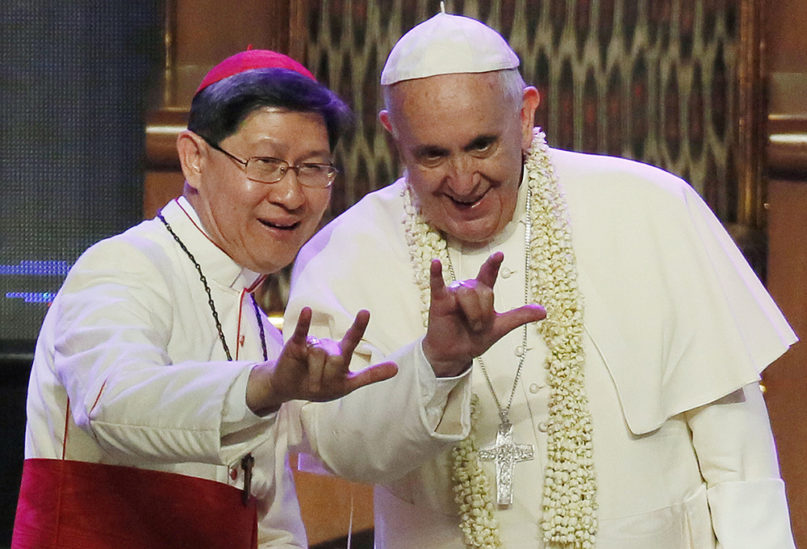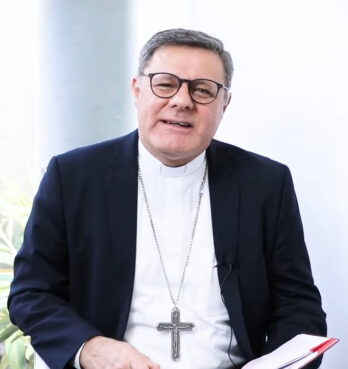VATICAN CITY (RNS) — When Pope Francis released last week the list of the men he intended to elevate to cardinal this year, one name, and location, leapt out: 47-year-old Giorgio Marengo. Not only the youngest man to be awarded a red hat since Polish Archbishop Karol Wojtyla — later Pope John Paul II — was made a cardinal 55 years ago, Marengo is the apostolic prefect of Ulaanbaatar, Mongolia, where the Catholics number in the low four digits.
Marengo’s elevation was also a stark reminder that Milan, whose first cardinal took charge in 1451, and Los Angeles, by far the most populous in the United States, with more than 4 million Catholics, are still without cardinals.
Since becoming pope in 2013, Francis has favored what he refers to as “the peripheries” of the church, far from Catholicism’s historic power centers in Europe and North America. And he has been at times idiosyncratic about his choices of cardinals: In 2015, he appointed the Rev. Ernest Simoni, an ordinary priest he’d met in Albania the year before, overriding the requirement that only bishops be made cardinals.
The same year, Francis elevated Bishop Soane Patita Paini Mafi, the fourth bishop of the small Polynesian kingdom of Tonga.
In a sense Marengo’s appointment only continued a trend, but it also punctuated the increasingly pointed statements that Francis seems to make with each new class of cardinals.
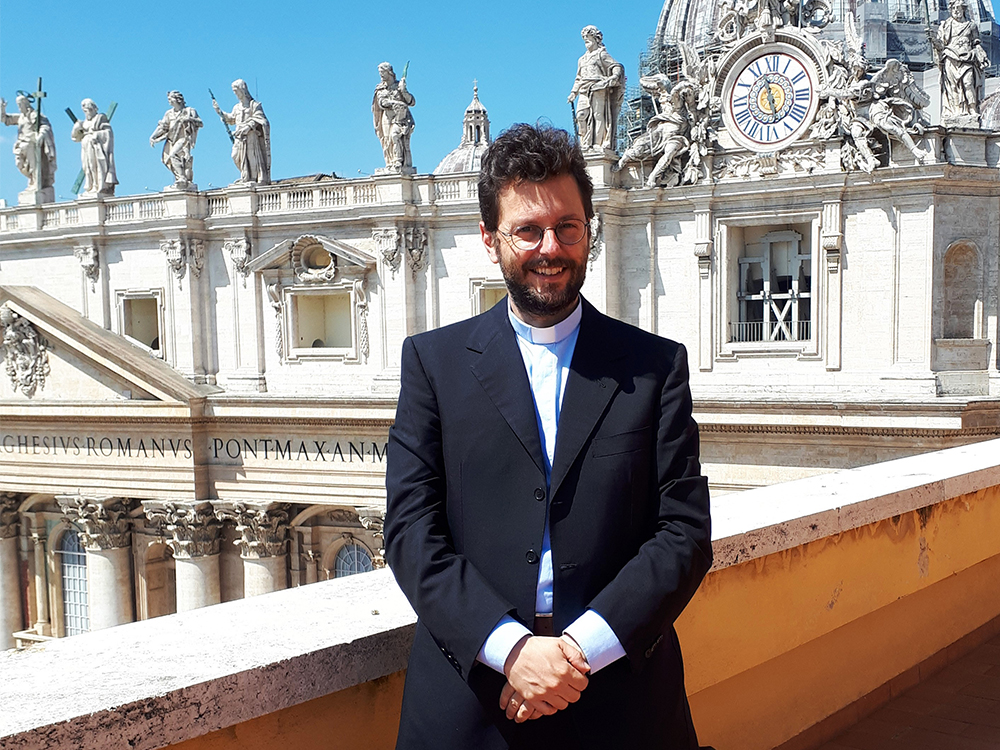
Bishop Giorgio Marengo in 2020. Photo by Amunra Magnus/Wikipedia/Creative Commons
For one thing, bishops in large and powerful archdioceses should not take the red hat for granted. “These appointments are in continuity with Pope Francis’ design to create a college of cardinals where the traditional cardinal seats aren’t represented,” said Vatican observer Agostino Giovagnoli about the new crop of cardinals.
Instead, the pontiff chose “representatives from churches from all over the world and especially churches in the peripheries that Pope Francis considers crucial to select his successor,” said Giovagnoli, who teaches contemporary history at the Catholic University of the Sacred Heart in Milan.
Lesson two: Francis, despite making dialogue a watchword for his papacy, is not above playing hardball. With the appointment of San Diego Bishop Robert McElroy to the College of Cardinals, Francis countered the conservative opposition he has faced in the United States, Giovagnoli said, where some bishops have pursued a Communion ban for Catholic politicians who support abortion rights.
McElroy’s diocese is next door to Los Angeles’ Archbishop Jose Gomez, president of the U.S. Conference of Catholic Bishops, who has at times seemed to ignore the pope’s guidance on abortion politics.
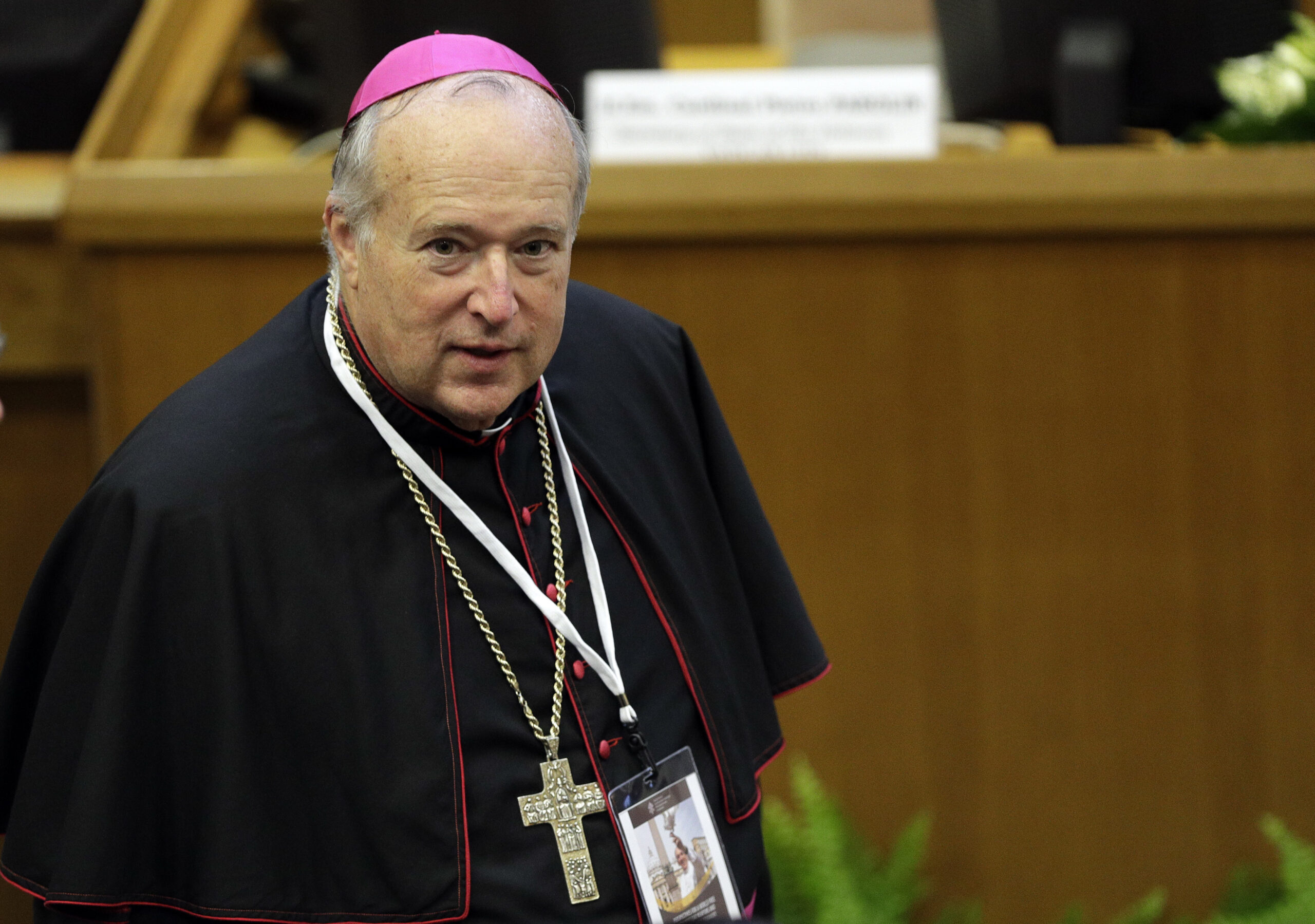
Robert W. McElroy, bishop of the Diocese of San Diego, arrives to attend a conference on nuclear disarmament, at the Vatican, Nov. 10, 2017. (AP Photo/Andrew Medichini, File)
In Africa, Francis elevated Bishop Peter Ebere Okpaleke, whom Francis picked in 2012 to head the Ahiara diocese in Nigeria, only to have local Catholics resist the appointment because Okpaleke was of a different tribe. Now bishop of Ekwulobia, Okpaleke’s elevation is a clear message that opposing the pope’s wishes will do you out of a cardinal.
Elevating British Archbishop Arthur Roche, the prefect of the Vatican Congregation for Divine Worship, also barked back at Catholics who use the Traditional Latin Rite as a form of dissent against the modernization of the church enshrined in the Second Vatican Council. Roche is a staunch defender of Francis’ document, Traditionis Custodes, which largely curtailed the celebration of Mass in the old rite.
On the whole, Francis’ new cardinals reflect the more positive concerns of his papacy: inclusiveness, immigrants, the environment and combating clericalism. The selection of Marengo, an Italian missionary to Ulaanbaator, “shows that missions still matter,” said the Rev. Mario Ghezzi, director of AsiaNews, the official press agency of the Pontifical Institute for Foreign Missions. “For the pope, it’s still relevant to leave your country and go announce the Gospel in another country.”
Marengo is also one of six new cardinals in Asia, where Francis has boosted the number of cardinals to 24 from 11 when he became pope in 2013.
In overwhelmingly Catholic East Timor, a nation of 1.3 million sprinkled across an island it shares with Indonesia, Archbishop Virgílio do Carmo da Silva of Dili “almost fainted,” he told the press, when he heard last week that he would be among this year’s cardinal class.
“The attention toward Asia seems pretty clear,” Giovagnoli said, adding that the continent “is destined to have a growing role in the Catholic Church.”
The push in Asia includes India, where the new cardinals are Archbishop Filipe Neri Ferrão of Goa and Archbishop Anthony Poola of Hyderabad, the first cardinal who comes from the Dalit, the caste also known as “untouchables.” Neri Ferrão’s diocese, while small, has become the hub of Catholic vocations and leadership.
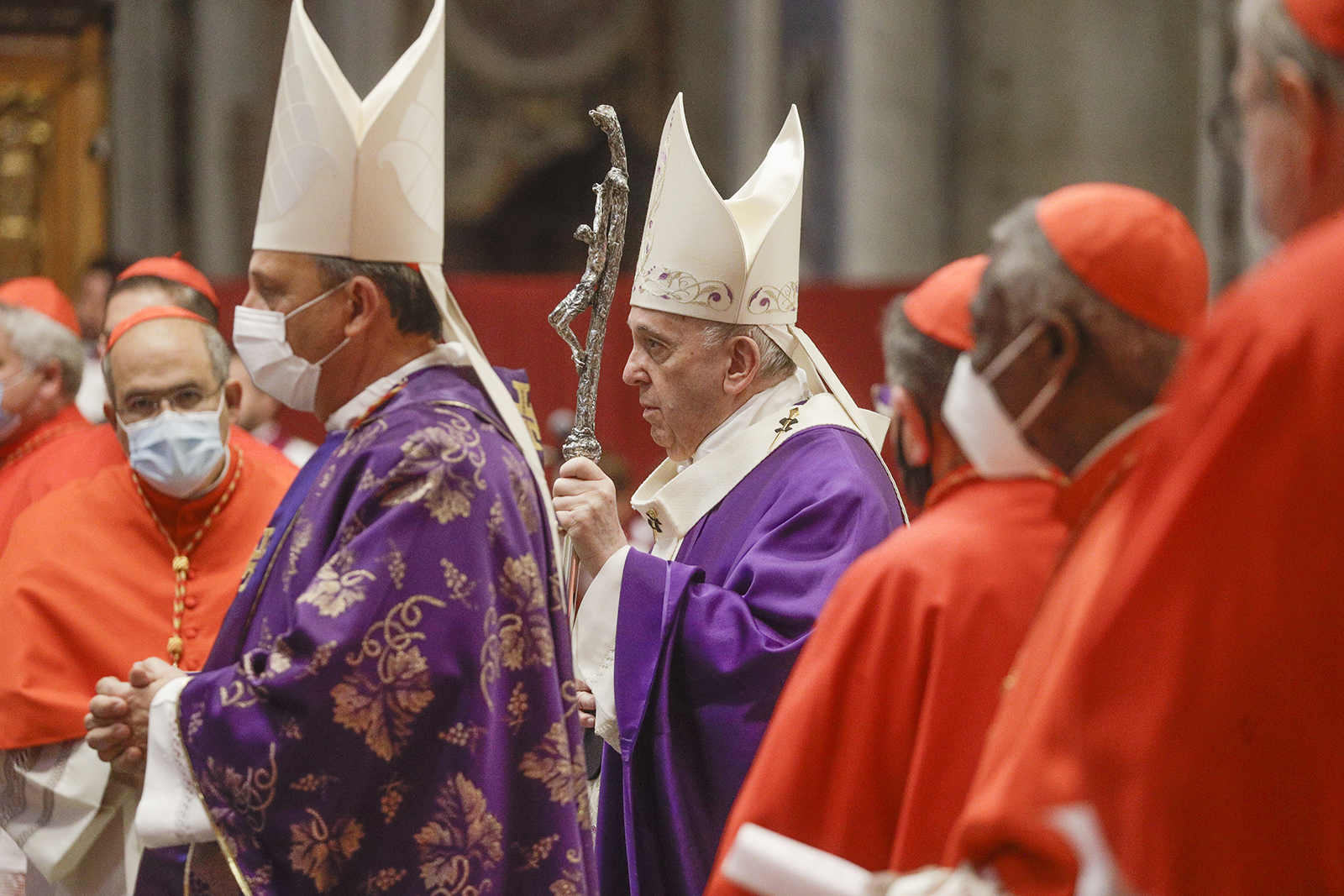
Pope Francis arrives to celebrate Mass the day after he raised 13 new cardinals to the highest rank in the Catholic hierarchy, at St. Peter’s Basilica, Sunday, Nov. 29, 2020. (AP Photo/Gregorio Borgia, Pool)
Francis’ attention to Asia in general recognizes a shift in which seminaries and convents are exploding in many places in Asia, while the pews become ever more empty in many historically Catholic strongholds in Europe. And while donations in the United States, Germany and other Western countries dwindle in the wake of the sexual abuse scandals, in places such as Singapore, where Bishop William Goh Seng Chye of Singapore will become cardinal, the Catholic community is emerging as a “culturally and economically strong reality, with a strong Catholic identity and a significative charitable impetus,” Ghezzi said.
The importance given to Asia is especially evident in the decision to elevate South Korean Archbishop Lazzaro You Heung-sik, who has headed the Vatican’s Congregations for Clergy, which supervises all priests not belonging to religious orders, since late last year.
You is the second-highest-ranking cleric at the Vatican from Asia. Luis Antonio Tagle of the Philippines, the prefect of the Congregation for the Evangelization of Peoples, is considered to be a rising star in Francis’ pontificate.
Asia’s importance may have worked against Bishop Andrew Chan, who has led the diocese of Hong Kong since January 2021. The Vatican recently signed a tenuous treaty with China on the appointment of bishops, and, given the ongoing tensions between Hong Kong and Beijing, the pope might have wanted to avoid riling the Chinese government, whose patience is already tried by the vocal criticism of the emeritus bishop of Hong Kong, Cardinal Joseph Zen.
In Brazil, Francis solidified his support for his native continent of South America, creating two cardinals who signify his commitment to the environment (in the face of the indifference of President Jair Messias Bolsonaro) and to young people.
Archbishop Leonardo Ulrich Steiner heads the diocese of Manaus, the most populous city in the Amazon, and also follows up on Francis’ 2109 summit on the Amazon region and its peoples. Steiner already heads the special episcopal commission for the Amazon; his red hat shows the region remains a priority. The pope also made Archbishop Adalberto Martínez Flores the first cardinal from Paraguay, whose borders encompass the second-largest rainforest in Latin America.
At 54, Archbishop Paulo Cezar Costa of Brasilia has been a driving force for Catholic youth initiatives since he was the director of the World Youth Day in Rio de Janeiro in 2013.
But geography — pulling from all corners of the globe — trumped ideology in this round of appointments. Bishop Richard Kuuia Baawobr of Wa, in Ghana, is known for working with people suffering from mental illness, but also for his vocal support of traditional family values against foreign interference. Along other Ghanian bishops, Baawobr signed a letter of support for legislation that would make homosexual acts illegal. While rewarding Baawobr seems at odds with Francis’ opening toward the LGBTQ community, it shows he is willing to respect local mores.
That leaves Europe to bear the brunt of Francis’ messaging. His choice to deny Milan while making Bishop Oscar Cantoni of Como, Italy, a cardinal was greeted with shock and indignation from Italian news outlets but was understood as a twin expression of concern for migrants and scorn for careerism in the church. Cantoni’s small see also overwhelmingly supports Italy’s right-wing Northern League, a political party led by Matteo Salvini, while at the same time hosting the largest share of migrants flooding to Italy from the south and east.
In France, where a nationalist, anti-immigration party narrowly lost to the centrist President Francois Macron, the pope elevated Bishop Jean-Marc Aveline of Marseilles, who has been an advocate for migrant rights.
RELATED: After abortion vote, Colorado Catholic bishops ask lawmakers to refrain from Communion
Despite the political nature of recent cardinal appointments, “Pope Francis doesn’t want to create his own political party,” according to Giovagnoli, “be it within the Roman Curia or without.” And among his picks even among curial staff were a few olive branches: Archbishop Fernando Vérgez Alzaga, who oversees the management of the Vatican City State, will become the first cardinal from the Legionaries of Christ, a religious order known for its conservative bent that was heavily discredited following the discovery of sexual abuse of minors by its founder, the Rev. Marcial Maciel.
“There is a version of the church that the pope wants to communicate and that inspires his choices,” said Giovagnoli, admitting that some of his reasoning may only be revealed at the next conclave, when Francis is gone or retired. For now, the professor added, “What is clear at this point is that Pope Francis is not one to follow the rules.”
RELATED: Pope Francis appoints cardinals, setting stage for election of his successor
